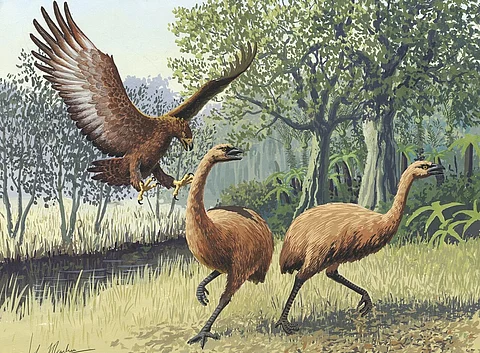

The extinction of the iconic moa on Aotearoa-New Zealand was ‘unavoidable’ after the Polynesians colonised the South Pacific nation more than 600 years ago, a new study has found.
The iconic moa were giant, flightless birds that disappeared within 100 to 300 years after human arrival on New Zealand.
Scientists from the US, Australia and New Zealand used fossils and detailed computer modelling to reconstruct how six species of moa disappeared and whether their extinctions were avoidable.
Their research showed that the extinction of the moa were caused by frequent harvesting of the birds and their eggs.
“Our modelling suggests that the only way moa could have co-existed with humans is if large “no-take” harvest zones had covered more than 50 per cent of New Zealand’s land area. This would have been extremely difficult to implement given the social structures of Polynesian colonists, and their reliance on wild food sources, particularly in southern New Zealand,” a statement by Curtin University in New Zealand quoted lead researcher Sean Tomlinson, from its School of Molecular and Life Sciences.
Tomlinson completed the research while at the University of Adelaide.
He added that the arrival of people in New Zealand more than 600 years ago caused one of the largest and most rapid losses of native species across the Pacific.
While the moa cannot be brought back, the researchers feel that the insights from the study can provide valuable lessons to conserve species today.
“Our findings suggest that today’s large, flightless birds, such as Kiwi and Cassowary, probably require much bigger conservation areas that include pristine habitats that are least impacted by humanity,” the statement quoted co-author Associate Professor Damien Fordham, from the University of Adelaide’s Environment Institute.
“This new research shows that extinct species can offer crucial insights to help guide conservation efforts for New Zealand’s remaining flightless birds.”
The paper titled, Was extinction of New Zealand’s avian megafauna an unavoidable consequence of human arrival? has been published in Science of the Total Environment.